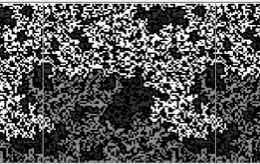2017

Electrical Properties of Nanocomposite Materials
Developing new materials and devices that have extremely long life cycles and deliver high bursts of energy would help to advance a variety of applications that range from mobile storage systems (e.g. for mobile computing or electric vehicles) to pulsed power technologies (e.g. for railguns or laser systems) to larger storage facilities for alternative energy generation (e.g. for wind or solar power stations). This research effort combines both nanofabrication and numerical simulation to study the polarizability and electric field strength of material interfaces in unique composite configurations. This investigation is predicated on a variety of observations over the past 20 years during which numerous experiments have revealed a large increase in the low-frequency capacitance of devices constructed from metal-insulator or multi-insulator composite materials. These capacitive increases are typically reported as dramatic increases in the effective relative dielectric constants of the nanocomposite material. For example, nano powder compacts of high breakdown field strength material, such as SiO2, Si3N4, Al2O3, and TiO2, have been shown to increase the permittivity at low frequencies from 1-2 orders of magnitude. This research effort examines the mechanisms behind this effect and also explores devices that could accentuate certain properties to create useful energy storage devices.

